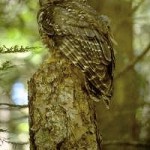“Obviously there are caveats,” Barnosky said. “What we know is based on observations from just a very few twigs plucked from an enormous number of branches that make up the tree of life.”
He urges similar studies of groups other than mammals to confirm the findings, as well as action to combat the loss of animal and plant species.
“Our findings highlight how essential it is to save critically endangered, endangered and vulnerable species,” Barnosky said. “With them, Earth’s biodiversity remains in pretty good shape compared to the long-term biodiversity baseline.”
“If most of them die, even if their disappearance is stretched out over the next 1,000 years, the sixth mass extinction will have arrived.”
Co-authors of the paper are: UC-Berkeley integrative biology graduate students Nicholas Matzke, Susumu Tomiya, Guinevere Wogan, Brian Swartz, Emily Lindsey, Kaitlin Maguire, Ben Mersey and Elizabeth Ferrer; Tiago Quental, a post-doctoral fellow at the University of Sao Paulo, Brazil; and Jenny McGuire, post-doctoral fellow at the National Evolutionary Synthesis Center at Duke University in Durham, North Carolina.
Check the following link for Full Study:
http://www.nature.com/nature/journal/v471/n7336/full/nature09678.html
About NSF
The National Science Foundation (NSF) is an independent federal agency that supports fundamental research and education across all fields of science and engineering. In fiscal year (FY) 2010, its budget is about $ 6.9 billion. NSF funds reach all 50 states through grants to nearly 2,000 universities and institutions. Each year, NSF receives over 45,000 competitive requests for funding, and makes over 11,500 new funding awards. NSF also awards over $400 million in professional and service contracts yearly. For more information, visit www.nsf.gov.
Source: NSF Press Release dated March 2, 2011.













